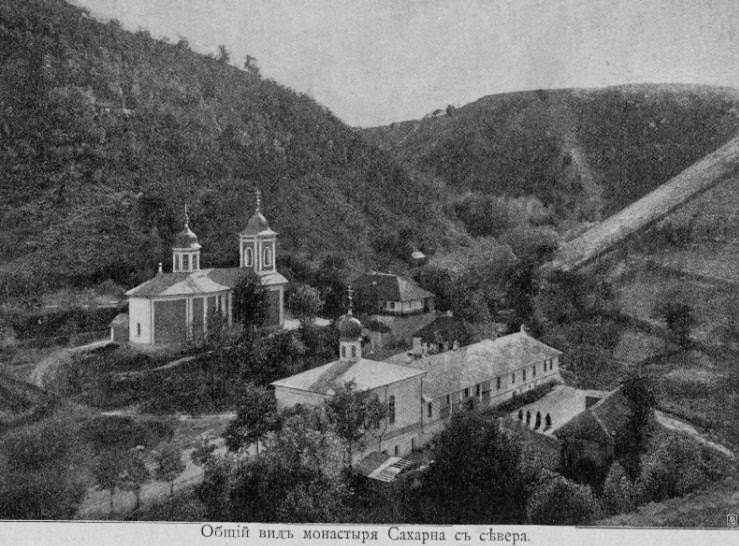The Archaeology of Moldova | Interview with Denis Topal
[** If you like this post, please make a donation to the IR&DD
project using the secure button at the right. If you think it is interesting or
useful, please re-share via Facebook, Google+, Twitter etc. To help keep the
site in operation, please use the amazon search portal at the right - each
purchase earns a small amount of advertising revenue **]
The Archaeology of Moldova | Interview with Denis
Topal
Owen Connolly
Many archaeologists and people from Western countries
may not have heard of this small landlocked country in the Eastern corner of
Europe. For others, they have may have heard that Moldova is famous for being
Europe’s poorest country. The people of Moldova consist of a variety of
different cultures including Moldovan, Russian, Bulgarian, Gagauzian and
Ukrainian as well as a small number of Gypsy communities. This blend of
cultures gives an often confusing identity to citizens there.
 |
| Sakharna Monastery, Moldova (Source) |
According to legend, a hunter by the name of
Bogdan was travelling in the countryside with his dog Moldo. They were in
pursuit of a wild game. The dog was so tired that it went to a river to drink
but despite this collapsed and died. Bogdan fell into grief, he loved his dog,
and after taking a look around the land around him decided it was a good place
to settle. It’s from Moldo, that the name Moldova is derived.
What many archaeologists may be surprised to learn
is that this little country (comparable in size and population to Ireland) is
one of the richest archaeologically in Europe. Having spent some time there
celebrating the infamous holiday – Archaeology day – on the 14-15th of August,
in New Tatarovka, along the Moldova-Ukrainian border not far from Soroco, I was amazed at the amount archaeology just
lying around on the ground in front of me. Numerous worked pieces of flint:
cores, flakes, and other tools. My
friend Denis (Denis Shapovalov Valentinovich) translated for me as we navigated
our way through the forest and fields. More than three years after my first
visit there I’ve taken the time to discuss the state of archaeology with Denis
Topal, from the High Anthropological School, Chisinau Moldova.
1) What are
the difficulties facing archaeological research in Moldova?
As you can imagine, a country like Moldova has a
variety of issues facing the country in general and as a result of it,
non-profit making sectors suffer. There are currently three main sources of
income for archaeological research, these include: the Construction sector,
Grants from private and public institutions and, of course, universities.
2) What
archaeological sites might western archaeologists find surprising in Moldova?
There is a wealth of archaeology in Moldova, and
over the course of its history we have been part of a variety of different
political Empires. In my opinion there are three main areas of potential
development for archaeological research. These are Palaeolithic studies,
Indo-European questions related to hunter-gatherers and farming and Roman
colonization. I think many western archaeologists would be surprised at the
high level of interaction between past peoples here and the potential for
greater research in these areas.
3) How many
Professional archaeologists are there in Moldova?
As you can imagine, the state of Moldovan economy
does not allow for the profession of archaeologist to be a particularly
profitable one, and so in answer to this particular question, I estimate there
are about fifty professional archaeologists in the entire country.
4) What is
the potential for archaeological research in Moldova?
This is an easy questions, in Moldova there are
currently 30,000 registered archaeological sites, 10,000 of these are burial
mounds. The area of our country is 33,846 sq. km, so we have more than one
archaeological site for every kilometre. As you can see, it’s a lot of work for
50 professional archaeologists.
5) What is
the most important archaeological find from Moldova in recent years?
Probably, it’s a Palaeolithic layer with a huge
collection of flint tools which belongs to the Oldowan epoch 800-1.2 million y. o.
(Bayraki village, 2010).
6) What is
the future of archaeology in Moldova in your opinion?
The future of archaeology in Moldova is anybody’s
guess, and it is impossible to answer in a few sentences. From what I have told
you already, the challenges are overwhelming and are not only connected to
financial problems. I think to answer your question fully, you would need to
write a PhD dedicated to the topic.
7) What is your
favourite period of study and Why? Tell us about Stratum, the archaeological
journal you are personally involved in.
If you mean favourite period for academic research
(like writing articles, lecturing etc.) – for me it’s Hellenismus. If you mean favourite
period of archaeological prospecting (excavation, publishing results etc.) it’s
Prehistory (Copper age) and Early nomads. Prehistoric sites are very rich with
ceramic material and also there are a lot of possibilities of house
reconstruction. About Stratum you could read here. My personal attitude - I like the concept of thematically divided volumes.
9) What
sites would you recommend archaeo-tourists to visit in Moldova and why?
There are lot. But the tourist infrastructure
(roads, hotels etc.) is only good for
visiting 2-3 places including Old Orhey (An old Monastery surrounded by
rock-caves), Sakharna (An ancient Monastery) and, probably Rudi (An ancient
village complete with fortifications, caves and Monasteries).
10) Can you
tell us something of the differing historical or archaeological perspectives/interpretations taken by people from Russian speaking communities and those
from Moldovan speaking communities?
Differences depend on quality of Education and
Professional skills. The professional archaeological community is so small, so,
probably, all of us are bilingual. Sometimes, difficulties could be in
different political views, but, I don’t think it has a reflection in scientific
papers. Historians are more and more divided due to their language.
Denis Topal
[Academia.edu | CV]



Comments
Post a Comment